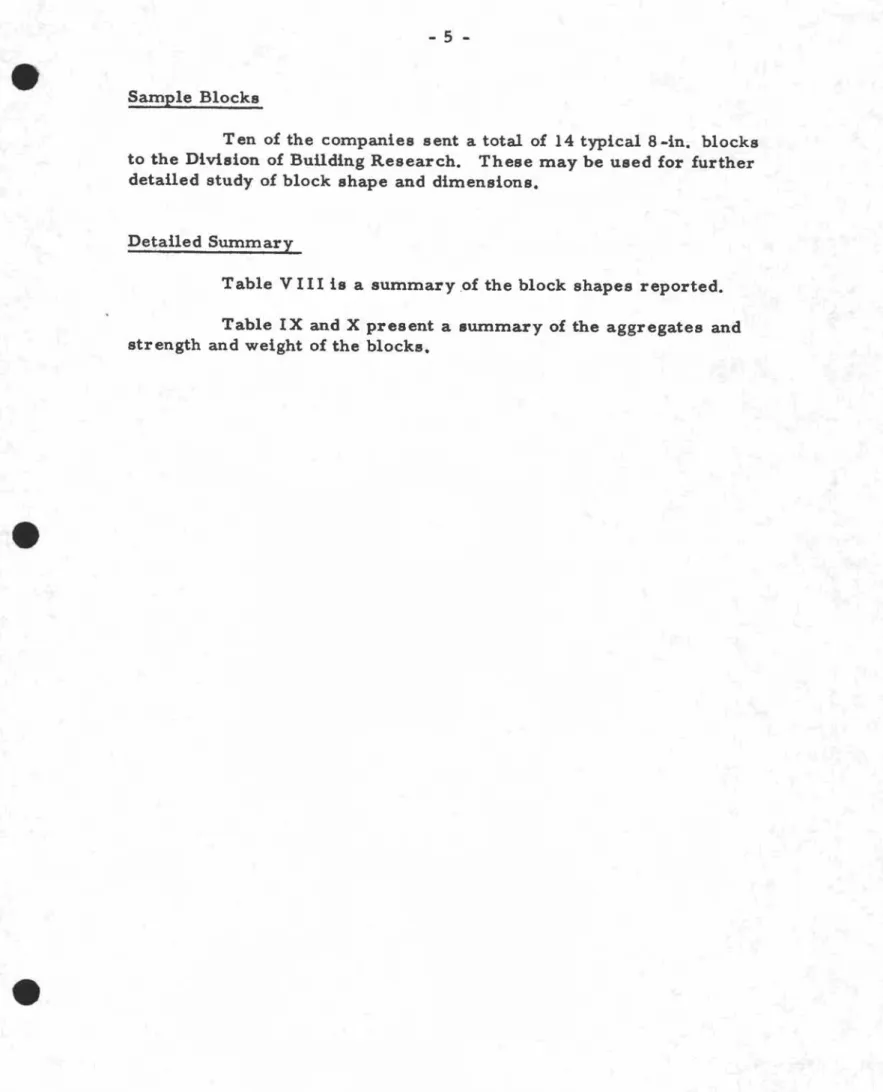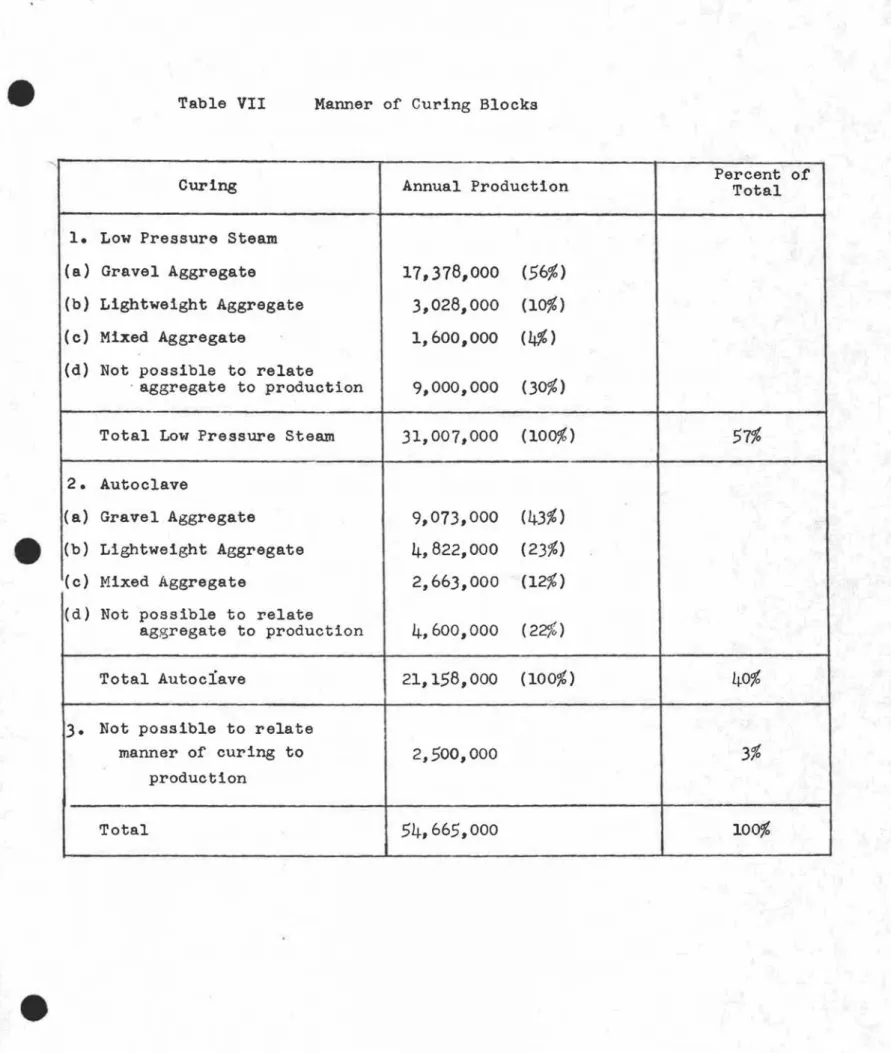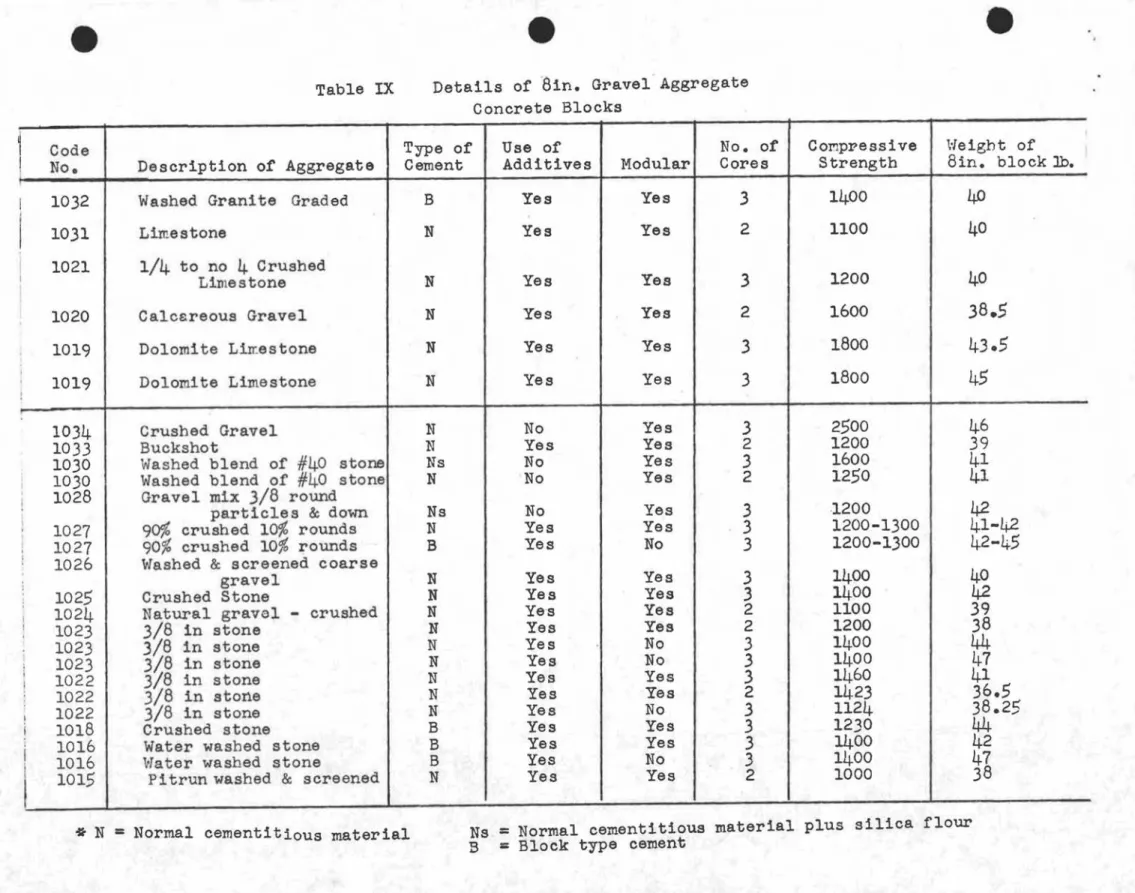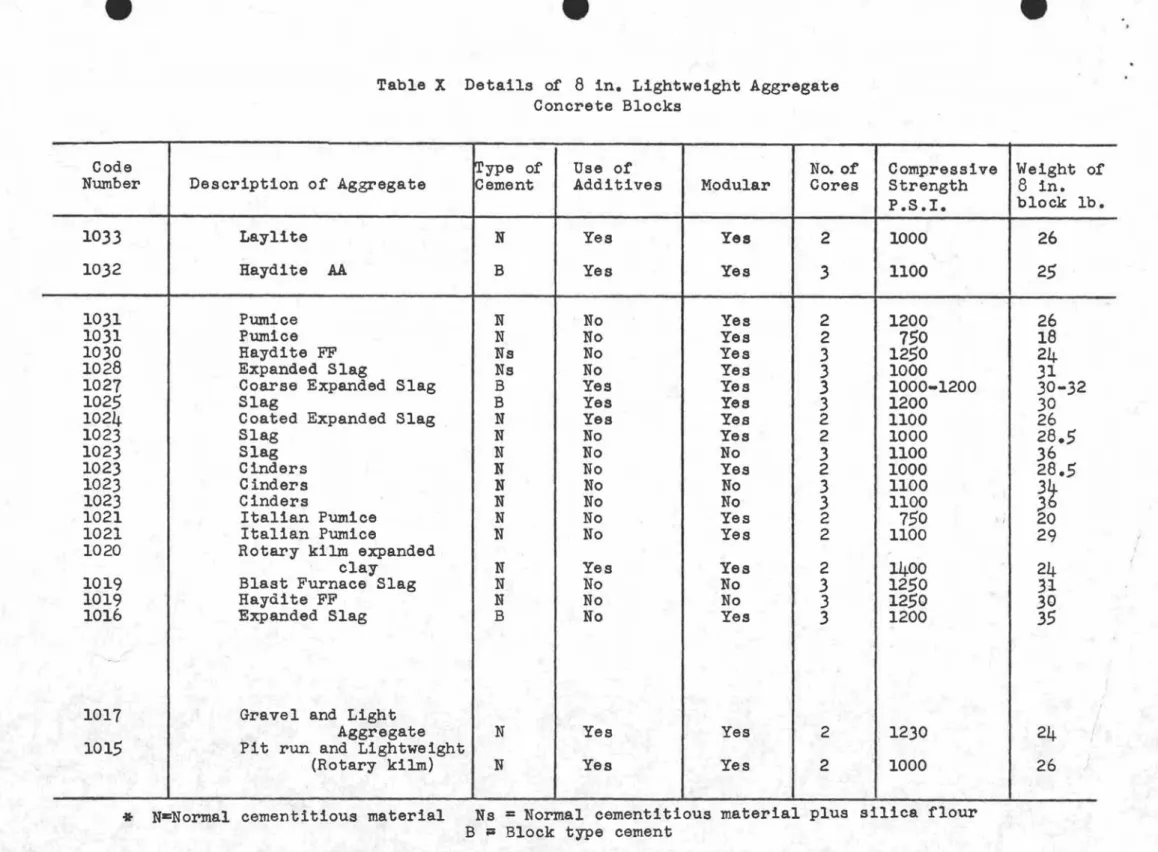Publisher’s version / Version de l'éditeur:
Technical Note (National Research Council of Canada. Division of Building Research), 1963-09-01
READ THESE TERMS AND CONDITIONS CAREFULLY BEFORE USING THIS WEBSITE. https://nrc-publications.canada.ca/eng/copyright
Vous avez des questions? Nous pouvons vous aider. Pour communiquer directement avec un auteur, consultez la
première page de la revue dans laquelle son article a été publié afin de trouver ses coordonnées. Si vous n’arrivez pas à les repérer, communiquez avec nous à PublicationsArchive-ArchivesPublications@nrc-cnrc.gc.ca.
Questions? Contact the NRC Publications Archive team at
PublicationsArchive-ArchivesPublications@nrc-cnrc.gc.ca. If you wish to email the authors directly, please see the first page of the publication for their contact information.
NRC Publications Archive
Archives des publications du CNRC
For the publisher’s version, please access the DOI link below./ Pour consulter la version de l’éditeur, utilisez le lien DOI ci-dessous.
https://doi.org/10.4224/20358876
Access and use of this website and the material on it are subject to the Terms and Conditions set forth at
Survey of the Physical Properties of Hollow Concrete Blocks Produced
in Canada
Galbreath, M.
https://publications-cnrc.canada.ca/fra/droits
L’accès à ce site Web et l’utilisation de son contenu sont assujettis aux conditions présentées dans le site LISEZ CES CONDITIONS ATTENTIVEMENT AVANT D’UTILISER CE SITE WEB.
NRC Publications Record / Notice d'Archives des publications de CNRC: https://nrc-publications.canada.ca/eng/view/object/?id=c1ff9c9f-7436-40b3-9175-d8179a3b6e9f https://publications-cnrc.canada.ca/fra/voir/objet/?id=c1ff9c9f-7436-40b3-9175-d8179a3b6e9f
f •
DIVISION OF BUILDING RESEARCH
NATIONAL RESEARCH COUNCIL OF CANADA
'IfE
C
lHI N II CAlL
NOTlE
No.
404PREPARED BY M. Galbreath CHECKED BY NBH APPROVED BY NBH
PREPARED FOR
セ September 1963
National Concrete Products Association
SUBJECT SURVEY OF THE PHYSICAL PROPERTIES OF HOLLOW
CONCRETE BLOCKS PRODUCED IN CANADA
A survey of concrete block production was undertaken because of a need for information on the composition, shape and size of hollow
concrete blocks produced in Canada. The National Concrete Products
Association whose members assisted in the survey wished to know more
of the range of production of their members. The Building Structures
Section of the Division of Building Research, which is studying the stability of hollow masonry walls, was interested in the strength and
weight of the units. The Fire Section, Division of Building Research,
wished to learn more about the size, shape and nature of aggregates used in the concrete blocks.
Full co-operation was provided by the Technical Committee of the NCPA who advised on the contents of the questionnaire, distributed the questionnaire to members, collected the replies and operated a coding
system to preserve the anonytnity of the contributors.
The questionnair e (Appendix A) was designed to obtain information on over -all dimensions of blocks, percentage of solid material in each
block, face shell thickness, type of aggregate, and proportion of production
devoted to each type of block. Some compromise was necessarily involved
2
-Extent of Survey
The questionnaire was sent to all producer members of NCPA
(about 85), and 20 replies were received. Each company reported
production in equivalent 8 -in. units. Total annual production reported
by the 20 companies covered 54,665,000 units (8 companies produced 39.095,000 units or 72 per cent of the total).
Total production reported represents 37 per cent of Canadian production for the same period as reported by Dominion Bureau of
Statistics (146,363,000 units). The DBS figure, however, represents
only about 90 per cent of the total Canadian production because the
DBS survey did not include the smaller producers. If this figure is correct.
then this survey may be assumed to cover about 33 per cent of all Canadian
production. Another report covering 1,000.000 units was received
subsequent to the preparation of this note. It was, however, presented in
insufficient detail to add to this study.
Use of Modular Sizes
Each company reported over -all size of blocks produced whether
modular, 1. e. 15-5/8 by 7-5/8 by 7-5/8, or non-modular. All 20 companies
produced modular blocks and 7 companies produced non-modular in addition to modular blocks.
Nature of Coarse Aggregate Used in Blocks
Thirteen companies reported production in a manner that
enabled the type of coarse aggregate used to be related to number of blocks
produced. Table I shows the nature of the coarse aggregate used in the
blocks and the annual production and compares these figures with the
DBS figures for the same period. In the survey natural stone aggregates
are included in 75 per cent of the blocks and lightweight aggr egates in
25 per cent. The DBS figures for the same period are 70 and 30 per
cent respectively.
Description of Coarse Aggregates
The descriptions of the coarse aggregates included in
the survey returns are set out in Table IX. In general they fall into
1. Siliceous
2. Calcar eous
3. Natural stone
(not fully identified)
4. Lightweight
5. Mixed aggregates
Shape of Blocks
3
-Granite
Limestone, dolomite limestone, calcar eous gr a vel
Crushed stone, gravel, pit run (a) Expanded blast furnace slag,
rotary kiln expanded clay, pumice,
(b) Blast furnace slag cinder s Gravel and light aggregate pit run
and lightweight (rotary kiln)
The number of cores in the block, the size of the cores, and the face shell thickness are significant factors in the fire endurance of
a concrete block wall. In Tables II and III the shapes of 8-in. modular
2-core and 3-core blocks are analyzed in relation to annual production. It can be seen that:
(a) In 2-core blocks 52 to 53 per cent solid represents 83 per cent
of annual production.
(b) In 3-core blocks 58 to 60 per cent solid represents 76 per cent of
annual production.
The figures for annual production are for the full range of block sizes and
are not confined to the 8 -in. blocks. This does, however, give some
indication of the more common pattern.
In Tables IV and V the range of sizes and shapes of the 4-,
6 -, 10- and 12 -in. blocks linked to the 8 -in. 2 -core 52 to 53 per cent solid blocks and the 8 -in. 3 -core 58 to 60 per cent blocks are set out to illustrate the range of shapes that occur most commonly.
Type of Cement
The questionnaire asked for a description of the type of
cement used in the concrete mix and of the use of additives. Of 48 types
of concrete block described,
(a) Normal cementitious material was used in 34
(b) Normal cementitious material plus silica
4
-(c) Block-type cement was used in
(d) High early-strength cement was used in
Use of Additives
10
o
The use of cements and additives is shown in Table VI. The
additives were in general described by trade name. So far as these
can be identified it appears that they were all air -entraining agents or
plasticizers. Additives were used in 30 of the 48 types of concrete
blocks described. Nearly all concretes having natural stone aggregates
used additives whereas the majority of the lightweight concretes contained no additives.
Method of Curing
The survey returns on the means of curing blocks indicate that:
57 per cent of blocks are cured by low pressure steam, 40 per cent of blocks are cured by autoclave process.
In the remaining 3 per cent the means of curing could not be
related to annual production.
Table VII shows the relationship between method of curing, type of aggregate and annual production.
Block-making Machines
The survey returns described 35 block-making machines. These
were 2-,
2i-
and 3-pallet machines as follows:Number of Type of Machine Pr oduction,
Machines units/hour
6 2 -pallet 440 to 900
3
2i
-pallet 450 to 70026 3 -pallet 240 to 1000
Total 35
All blocks were said to be vibrated. One company having
5
-Sample Blocks
Ten of the companies sent a total of 14 typical 8-in. blocks
to the Division of Building Research. These may be used for further
detailed study of block shape and dimensions.
Detailed Summary
Table V III is a summary ,of the block shapes reported. Table IX and X present a summary of the aggregates and strength and weight of the blocks.
e
Table I
e
Nature of Coarse Aggregates used in Blocks
e
Description of
Annual
Production
Aggregate.
Equi valent
tjin.-
Percent
D.B.S. figures
Units
for sarr:e period
Granite
1,700,000
Limestone
4,000,000
62%
7010
Gravel
&
Crushed
Stone
13,320,000
Mixed Gravel
&
Lightweight
4,263,000
13%
Lightweight other
RTセE
than cinders
7,625,000
24
Cinders
146,000
i%
61b
Total
30,904,000
100%
1001b
Percent
Face
Annual Production
Solid
Shell
Eight in Equi v.
Total
Percent
Units
52%
1 5/16
8,000,000
52%
1
14,800,000
12,800,000
48%
453%
1.1-
"19,460,000
9,460,000
35%
55'fo
Ii
2,220,000
2,220,000
8%
58%
lA
42,350,000
2,350,000
0/%
26,830,000
100%
I
I
I I II
Ie
Table II
e
Shape of
8
in. Modular 2 Core Blocks
e
Table III
e
Shape of
8
in. Modular
3
Core Blocks
e
Percent
Face
Annual Production
Solid
Shell
Eight in Equiv.
Total
Percent
Units
52.1%
1i
-
1i
600,000
600,000
Uセ
53%
1.1-
41,660,000
1,660,000
14%
,55%
Ii
450,000
450,000
4%
58%
1
2,300,000
58%
Ii - Ii
900,000
3,200,000
26%
60%
Ii -
Ii
6,250,000
6,250,000
50%
75%
1
150,000
150,000
1%
12,310,000
100%
e
Table IV
e
Range of Sizes in Modular 2 Core Blocks
52% to 53% Solid in 8 in. Block
e
I
Code
Number
4
in nom thick 6 in nom thick 8 in nom thick 10 in nom thick 12 in nolT' thick%
Solid Face She1]%
Solid Face Shell '% Solid Face Shell '% Solid Face Shell%
Solid Face Shell1033 71 QMQセ 54 1 - 1-3/16 52 Qセ - 1-11/16 51.5 Qセ - 1-11/16 48.5 1t - 1-11/16 1031 76 1 62 1 52 1-5/16 51
.
1i 50 1-7/16 1030 72.8 1 60 1 53 l.l4 51.8 1i 48.7 li 1022-
-
-
-
52.1Ii
48 1-3/4-
-1021 76 1 60 1 53 1-5/16 51 Ii 50 1-9/16 1020-
-
54 1 52Ii
47 1-3/8 46 1i lOIS 72.8 1 54.5 1 53Ii
51.8 1i 48 1te
Table V
e
Range of Sizes in Modular 3 Core Blocks 58% to 60% Solid in 8 in Block
e
Code
Number 4- in. nom thick 6-in_nom thick 8-in.nom thick 10- in. nom thick 12-in.nom thick
%
Solid Face Shell%
Solid Face Shell%
Solid Face Shell%
Solid Face Shell%
Solid Face Shell1028 73.5 1 58 1 58 1 54 1 1/8
-
-1025 74 1 58 1 58
ili -
1i 58 1i - 1 3/4 56 1i - 1 3/41022 76.9 1 58.9 1 58.6 1i- 56.8 1t 55.1 1i
1019
-
-
-
-
60 1t - 1i 58 1 3/4 55.9 1 3/4e
Table
VI
e
Use of Cements and Additives
e
Type of Aggregate
rn::s
セ
't1 .-I a> p. セ 17l +lg
fa 't1 D +l a> a> セ セ 0 0 17l 17l Q) a>.-I D a>m
セャEッT a>>
a>セ
17l....
Uo
as a> +l () 8>
....
.-I r-t .-I ........
't:l <IS GS GS.-I .!:II +l 't1 +lセ
S ....
()....
セ 0 Mel) 0 't:l 8 0 0 .-I 't:l 0 120 l20 セセ
I
セ
tJnits
Units
Units
Units
Units
Units
Siliceous
-
-
1
1
"!"1
Calcareous
4
-
1
5
-
5
Natural Store not fully identified
14
2
4
16
4
20
Lightweight
14
2
4
6
14
20
Mixed Gravel
&
Lightweight
2
-
-
2
-
2
Total
34
4
10
30
18
48
Table VII Manner of Curing Blocks
Curing Annual Production Percent ofTotal
1.
Low Pressure Steam(a) Gravel Aggregate
17,378,000
(56%)
(b) Lightweight Aggregate
3,028,000
(10%)
(c) Mixed Aggregate
1,600,000
(4%)(d) Not possible to relate
. aggregate to production
9,000,000
(30%)
Total Low Pressure Steam
31,007,000
(lOO%)57%
2. Autoclave
(a) Gravel Aggregate
9,073,000
(43%)
(b) Lightweight Aggregate
4,822,000
(23%)
(c) Mixed Aggregate
2,663,000
(12%)
(d) Not possible to relate
aggregate to production
4,600,000
(22$)
Total Autociave
21,158,000
(100%)
40%
3.
Not possible to relatemanner of curing to
2,500,000
3%
production
Total
54,665,000
100%
e
Table VIII
e
Summary of Block Shapes Reported
e
Code No. of 4-in.nom 6-in.nom 8-in nom 10-in nom 12-in.nom
iセオュ「・イ Modular Cores Block Block Block Block Block
%
'1face%
face%
face%
face%
faceSolid shell Solid shell 30lid shell Solid shell Solid shell
in. in. in. in. in.
1034 Yes 3 74 I.!.4 60 1 75 1 65
Ii
65Ii
1033 Yes 2 71 QMQセ 54 1-1 3/16 52
It-l
11/16 51.5li-l
IJ;i6 48.5 1!-1 11/161032 Yes 3 70 1 56 1 53 1.1. 53 11 52 1 3/8 4 4 1031 Yes 2 76 1 62 1 52 1 5/16 51
U
50 1 9/16 1030 Yes 3 73.5 1 62 1 57.4 1..l. 58 55.9it
I
Yes 2 72.8 1 60 1 53 114 51.8 48.7 1029 Yes 3 68 1-1/8-
-
-
-
-
--
-Yes 2-
-
50 1-1/8 50 H 49Ii
46 1-5/8 I 1028 YesYes 23 73.5 1 58 1 58 1 54 1-1/8-
--
-
-
-
-
-
-
-
52.2I
1-1/8 1027 Yes 3 60 1cO
1 60 1..l._11 60 l1-1i' 60 iャNNャNMャセ Yes 3 65-
-
ャセMャゥ-
QAMQセyT-11-1- 3/ 4 - li-1-3/4 No 3 60 1 60 1 60
ILlt
60 1 -I! 601--1-l-1026 Yes 3 61.3 1 56.8 I.!. 52.1 ILl 59
li-
1- 3/ 457.7 't-I:31.4
4ILl
1025 Yes 3 74 1 58 1 58 58ir
1 -: /4 56 1-1-314
1024 Yes 2 73 1 57 1 55 11
4 52 49 1 1023 Yes 3 73 1 64 1-1/8-
-
-
-55 l ' Yes 2
-
-
-
-
58 11 53Ii
-
-No 3-
-
-
-
56it
56 1-3/8 55 1-5/8 No 3 75 1-1/8 62 1-3/16 60 60 il 60 2 1022 Yes 3 76.9 1 58.9 1 58.6 1- 56.8 55.1Ii
11
4 Yes 2-
-
-
-
52.1 48 1-3/4-
-No I 2-
-
-
-52.4 11
4 47.41-3/4
-
-No 3 77.2 1 59.9 1-
-
-
-5503 11.:il 1021 Yes 2 76 1 60 1 53 1-5/16 51Ii-
50 1-9/16 1020 Yes 3 70 1-
-Yes 2-
-
54 1 52Ii
47 1-3/8 46 Ii-1019 Yes 2 72.8 1 55 I.!...
-
-
-
-
-
-Yes 3-
-
-
-
60II-It
58 1-3/4 55.9 1-3/4 Yes 3 73.6 1 58.9 I],. 60 i!-1 58 1-3/4 55.9 1-3/4 No 3 69 1 71 It 62 61.61-3/4
59.5 2 1018 Yes 3 60 Qセ-
-
-
-
-
-
-
-1017 1016 Yes 3 55 1 55 1 55 I],. 55 11 55 1-3/4 No 3 55 1 55 1 55 1:- 55 II 55
1-3/4
No 3 60 1-
-
-
-
-
--
-1015 Yes 2 72.8 1 54.5 1 53It
51.8 I.!.2 48Ii
e
Table IX
e
Details of Bin. Gravel Aggregate Concrete Blocks
e
I I I I I I II
I I I I1
•Code Type of Use of No. of COI'lppessive \'leight of
No. Description of Aggregate Cement Additives Modular Cores Strength 8in. block Th.
I
1032
Washed Granite Graded B Yes Yes3
1400
40
1031
Limestone N Yes Yes2
1100
40
I
1021
1/4
to no4
CrushedI Limestone N Yes Yes
3
1200
40
t
,
1020
Calcsreous Gravel N Yes Yes2
1600
38.5
!
1019
Dolomite lセ・ウエッョ・ N Yes Yes3
1800
43.5
I
!
1019
Dolomite Limestone N Yes Yes3
1800
45
!
1034
Crushed Gravel N No Yes3
2500
46
1033
Buckshot N Yes Yes2
1200
39
1030
Washed blend of#40
stone Ns No Yes3
1600
41
I
1030
Washed blend of#40
stone N No Yes2
1250
41
I
1028
Gravel mix3/8
roundI
I particles
&
down Ns No Yes3
1200
42
I
1027
9010
crushed QPセ rounds N Yes Yes. 3
1200-1300
41-42
I,
1027
90%
crushed10%
セッオョ、ウ B Yes No3
1200-1300
42-45
i
1026
Washed&
screened coarse:
gravel N Yes Yes
3
1400
40
1025
Crushed Stone N Yes Yes3
1400
42
1024
Natural gravel - crushed N Yes Yes2
1100
39
1023
3/8
in stone N Yes Yes2
1200
38
1023
3/8
in stone N Yes No3
1400
44
1023
3/8
in stone N Yes No3
1400
47
1022
3/8
in stone N Yes Yes3
1460
41
1022
3/8
in stone N Yes Yes2
1423
36.5
1022
3/8
in stone N Yes No3
1124
38.25
1018
Crushed stone B Yes Yes3
1230
44
1016
Water washed stone B Yes Yes3
1400
42
1016
Water washed stone B Yes No3
1400
47
1015
P1trunwasbed&
screened N Yes Yes2
1000
38
*
N=
Normal cementitious material Ns=
Normal cementitious material plUS silica floure
e
Table X Details of
8
in. Lightweight Aggregate
Concrete Blocks
e
Code
rrype of
Use of
No. of
Compressive
Weight of
Number
Description of Aggregate
Cement
Additives
Modular
Cores
Strength
8
in.
P.S.I.
block lb.
1033
Laylite
NYes
Yea
2
1000
26
1032
Haydite
AA BYes
Yes
3
1100
25
..
1031
Pumice
N
No
Yes
2
1200
26
1031
Pumice
N
No
Yes
2
750
18
1030
Haydite FF
Ns
No
Yes
3
1250
24
1028
Expanded Slag
Ns
No
Yes
3
1000
31
1027
Coarse Expanded Slag
B
Yes
Yes
3
1000-1200
30-32
1025
Slag
B
Yes
Yes
3
1200
30
1024
Coated Expanded Slag
NYes
Yes
2
1100
26
1023
Slag
N
No
Yes
2
1000
28.5
1023
Slag
N
No
No
3
1100
36
1023
Cinders
N
No
Yes
2
1000
28.5
1023
Cinders
N
No
No
3
1100
Uセ
1023
Cinders
N
No
No
3
1100
1021
Italian Pumice
N
No
Yes
2
750
20
1021
Italian Pumice
N
No
Yes
2
1100
29
1020
Rotary kilm expanded
clay
N
Yes
Yes
2
1400
24
1019
Blast Furnace Slag
N
No
No
3
1250
31
1019
Haydite FF
N
No
No
3
1250
30
1016
Expanded Slag
B
No
Yes
3
1200
35
-1017
Gravel and Light
Aggregate
N
Yes
Yes
2
1230
24
I1015
Pit run and Lightweight
(Rotary kilm)
N
Yes
Yes
2
1000
26
*
nセnッイュ。ャcementitious material
Ns
=
Normal cementitious material plus silica flour
B - Block type cement
APPENDIX A
SURVEY OF THE PROPERTIES OF HOLLOW CONCRETE BLOCKS
To
m・ュ「セイウof N.C.P.A.
Your co-operation is solicited in the gathering of
infor-mation on concrete block production in Canada.
This information 1s
desired by the Division of
bオャャ、ャョセResearch, National Research
Council to assist in planning studies and research of concern to this
industry.
It is believed that it will also be of direct value to
the Association, but in any event will be a contribution to the
」ッセッー・イ。エゥカ・
study programmes which are now being developed between
DBR/NRC and NCPA.
The questionnaires attached have been reviewed
by your Technical Committee and the project has their full approval.
Every effort. will be made to protect individual interests by suitable
coding of the results at the NCPA head office and by careful handling
of the results.
The questionnaires, when completed, should be returned to the
(AUditor)
(National Concrete Products Association)
who will be responsible for protecting the anonymity of the information
and will assign and retain the code identification in his office.
All
information obtained frQm this survey will be treated in the strictest
confidence and no pUblication will be made without the permission of
the N.C.P.A.
The amount of detail called for on the questionnaire has
been kept to a minimum.
Additional information, particularly about
block shape may be required.
To assist in providing this it is
suggested that each manufacturer send to the Division of Building
Research one 8-in. block which is
セッウエtypical of his production.
These samples should be identified as to Company and forwarded to
Division of Building Research,
Attention of Mr. G.W. Shorter,
Montreal Road Laboratories,
Natlonal Research Council,
Ottawa, Ontario.
Attached to this letter are one copy of Sheet One, "Block Size
u,five copies of Sheet Two "Concrete Mix" and one copy of Sheet Three
"Annual Production".
A2
-SHEET ONE
BLOCK SHAPE
(1)
Identify'your submission in a covering letter only.
Do not
otherwise identify these sheets.
All sheets in one submission
must be securely fastened together.
For, each block shape employed by your company enter the
appro-priate
、・エセゥャウゥョ(a),(b) or (c) below.
If your production
covers more than three, block shapes additional sheets may be
obtained from N.e.p.A.
セlo」Nセ PE.R.CtMT FA.CE No.
T ...IC,,( N!oS S. SOLID sセヲNlNlN
os:.
In.'"
CORe-So t)L.OC 14. thickmャsセN No"",. eNャHセcNt ' in. Co)S
HAPLI.
-4Hei,ht
ofbloc-k, ..
<; ti) . . . . •n,S
( ii)
Lene"th
0+
"'ock
.
...
-
.
..
"
' 0 -1'2 oU,.r<.b>
SHAPE..Z.
4
ll) h・[セィエof
block. ..
....
...
"
セca
(ii)l..enCjtJ-
of
I,loc
k. .
'...
...
"
101'2
oth • .,..
, (c.) SHAPe. '3.
4
セ
(i>
Hel
c:J\.,tor
bloCk.
... " 'n
セ(ii)
Le,."lh
ofblock.
• •••. ゥセ 101'2
oll'l..r
.
(2)
Block Making Machine.
Describe block making machine used for
each of:
(a) Shape
(b) Shape
(c) Shape
(Modify as proposed by Technical Committee)
1 • . . . '.'
.
2 ••••••••••••••••••••••••••••••••••••••••••••••••••
.
"A3
-セheイN[イᄋ 'rIA,/O
Identify your submission in a covering letter only.
Do not
otherwise identify these sheets.
All sheets in one submission
must be securely rastened together.
(3)
For each concrete mix used insert details in (a) and (b)
below.
If more than five concrete mixes are used additional
sheets may be obtained from N.C.P.A.
Check A,
£, C, D or E
to correspond to entries relating to production on Sheet Three.
Concrete Nix.
AD
aO
CtJ
Dtj
ED
..
..
.
...
..
.
..
.
.
..
.
.
.
..
.
.
.
.
.
"..
.
...
..
....
.
.
(a)
Na tertal
-(i) Cement.
Normal
0
Other
aloc:k Type
tJ
High Early Strength
0
(ii) Coarse Aggregate.
Describe
•....•.••.••.•... . '.' · · · .. · · . • · •
...
..
- '.
Size max •••••••••••••••• in.
min • • . . • . • . . . • • . . . . •
1n.
(iii) Fine
aァァイ・ァ。エ・セDescribe • . . . • • . . • . • . . • . . . · • • · · · . · · • . •
•
•• ••• •• •••• •• •• ••• • • •••
••
• ••
••
•
•
•
• ••
• ••
•
•
• • • ••
•• ••
•• • •••• •Size max •••••••••• sieve no.
Fineness Modulus •••••• if known
(iv)
(b)
Mix.
(i)
(ii)
(ili)
(iv)
Additives ••••••••••••••••••••••••••••••• if any.
Show quantities per batch.
Cementitious Material ••••••••••••••••••••••••••••••••• •• 1b •
Coarse Aggregate ••••••••••••••••••••••••••••••••••••••• •1b •
Fine Aggregate •••••••••••••••••••••••••••••••••••••••••• lb.
Additives • • • • • • • • • • • • • • • • • • • · • • • • • • • • • · • • · · • • · · · • · · · • • • •
A4
-C)HEET THREE
AN}mAL .PRODUCTION
Identify your submission in a coverinG letter only.
Do not
otherwise ldp,ntify these sheets.
All sheets in one submission
must be securely fastened together.
(4)
For each
」ッセ「ゥョ。エゥッョof block shape, concrete mix and method
of curing used insert in. the Table below the approximate
per-centage of your total production,
(8
in. equivalent) between
1st January 1961 and 1st January 1962.
Shapes 1, 2 and
3
should
correspond to details in Sheet One.
Concrete Mix A, B, C, D or
E should correspond to the description on Sheet Two.
If your
production covers more than three block shapes or five concrete
w.ixes additional sheets may be obtained from
nNcNpNaセCONCIHTf, COMPo W':IGtHT ANNUAl- PP.OOUCTION.
MIx STQ.f.NGTH
of
qApBッセ:Yo
of tot..l ...., ... "...1pf'ocluc+,:....for S....セャNセFNN cg.,l; blOC ... f ....etC'" ...セッョセ
or
」BイNセL u ...<ll •ーNセNゥN








